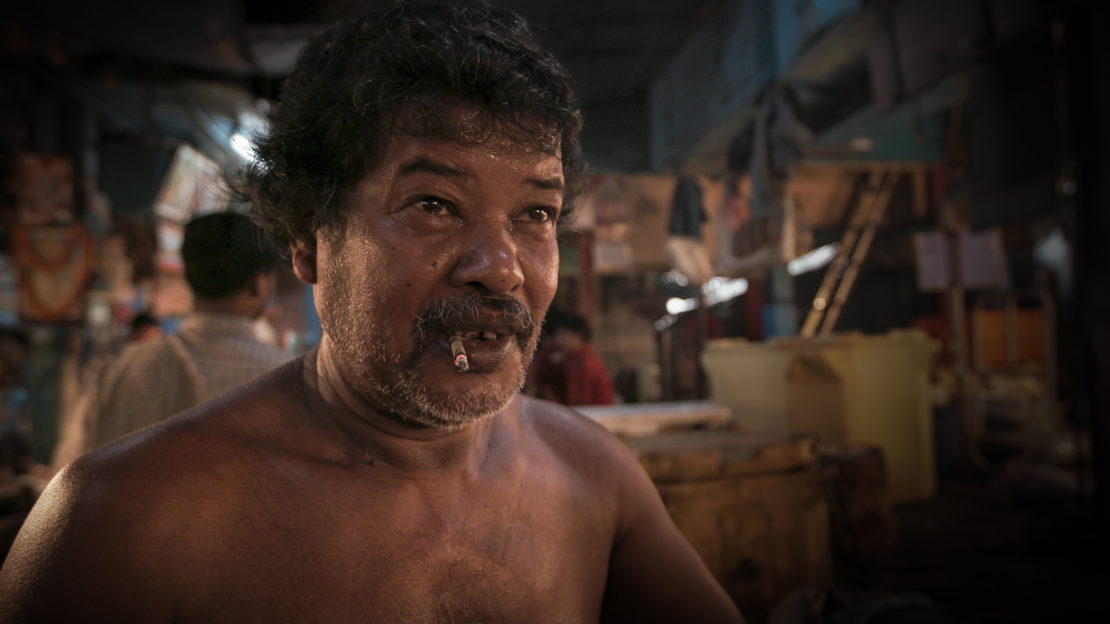From Canon Pro Network December 2017: Photographer, filmmaker and Canon Ambassador Clive Booth has notched up many achievements during his partnership with Canon. However, his most recent project – using the EOS C300 Mark II to film the legendary photographer Sir Don McCullin on a trip to India – saw him venture into high dynamic range (HDR) moviemaking with stunning results.Directing and delivering McCullin in Kolkata, Canon Europe’s first-ever HDR film, was a task Clive took on with relish. Following Sir Don around the hot, vibrant streets of Kolkata – with its rich, contrasty colours and dark, dense shadows – was the perfect place to fully demonstrate how an HDR film could give the audience its most realistic viewing experience possible, without actually being there.
In the simplest possible terms, HDR in film is the nearest we can achieve to what we see with the human eye,” Clive says. “You cannot underestimate how exciting this technology is.
Achieving HDR in film, he explains, is not the same as HDR in photography. “In photography, HDR is a single still taken from multiple exposures. However, moving image HDR requires each frame to record as much data as possible about the image in a single exposure. With stills HDR can sometimes look a bit odd. But HDR in moving images looks like reality.” It’s no good just capturing all that information though. Since its release, the C300 Mark II has had the potential to capture HDR images thanks to its wide dynamic range (15 stops when shooting in Canon Log 2), and wide colour space capability, but all that’s no good without being able to transfer that information and display it properly, and that supporting technology had to catch up. “Fortunately, Canon now has some of the best HDR capable reference monitors in the market that support the wider colour space and luminance levels required for HDR output. This is what makes HDR possible in film,” he says. “The cameras have been able to capture HDR for a long time, so it’s not about the input – it’s about how we post-produce and deliver.”
The monitor Clive used was Canon’s DP-V2420 4K reference display. It uses a Canon-developed image-processing engine along with an RGB LED backlight system and a newly-developed IPS LCD panel, which combine to deliver faithful colour reproduction. Without the monitor, it would have been impossible to grade the image with a high dynamic range.“Canon Log2 has the widest dynamic range available in Canon’s Cinema EOS range,” Clive says, “and on the C300 Mark II we were working with its built-in variable ND filters all the time, continually stepping down the exposure and using the camera’s waveform monitor to control brightness.”
It wasn’t until Clive was in the edit suite back in London that he truly embarked on his HDR journey. “For speed of edit we transcoded over 15 hours of rushes from four days of shooting in India. My editor of the last decade, Tristram Edwards, spent a week making selects in Adobe Premier and then we started putting a rough cut together. After a further ten days, we were on cut 35 and ready to grade,” he explains. “We did the post at Nice Biscuits in London using Da Vinci Resolve for the grade. “It’s at this point where the HDR story really gets interesting,” he says. “Our goal was to create two versions of the film, one in standard dynamic range (SDR) and one in high dynamic range. Chris Clarke our Director of Photography, Ollie our colourist and I began the grade in HDR on the DP-V2420. We gave it the look we wanted, which entailed a little bit of pulling back the highlights and increasing the contrast to achieve a cinematic look. We then integrated Don’s pictures at pertinent points throughout the film, giving them a more saturated grade that added to their value and importance. He was shooting on an EOS 5D Mark IV at 14bit so when his pictures came onto the monitor they really popped.
“We had this huge dynamic range to work with – up to 1000 NIT value compared to around 100 NITS for SDR. The monitor, when it was showing its white point, was so bright you could hardly look at it. It was incredible.” Clive continues: “The film started to look very, very good and we were able to see detail within the brightest highlight and darkest shadow that we couldn’t see in SDR. The colour gamut was wider and everything looked real, just as the eye sees it in fact. It would have been very easy to have increased the contrast ratio so much that the colours became too bright and too vivid, but we were very careful to reign it so as not to lose the cinematic feel we were after.
“Taking the HDR grade as a guide, our Colourist Ollie spent a full day making the SDR conversion. Chris and I joined him the following day to complete the process. In total, I would say that doing both the HDR and SDR grades equates to a grade and a half.”
“After living with SDR for so many years it took a long time to get used to HDR, but once we had become accustomed to it, there was no comparison and certainly no looking back. I will work in HDR all the time now because it won’t be long until everything is HDR and channels like BBC, Amazon and Netflix demand it. So, you’re future-proofing your work. And it’s not a matter of if, but when. We are in such an exciting time at the moment; there is more and more HDR content coming out, and retrospectively it is great because content that has already been shot can be regraded in HDR too. So, everyone’s a winner!”
